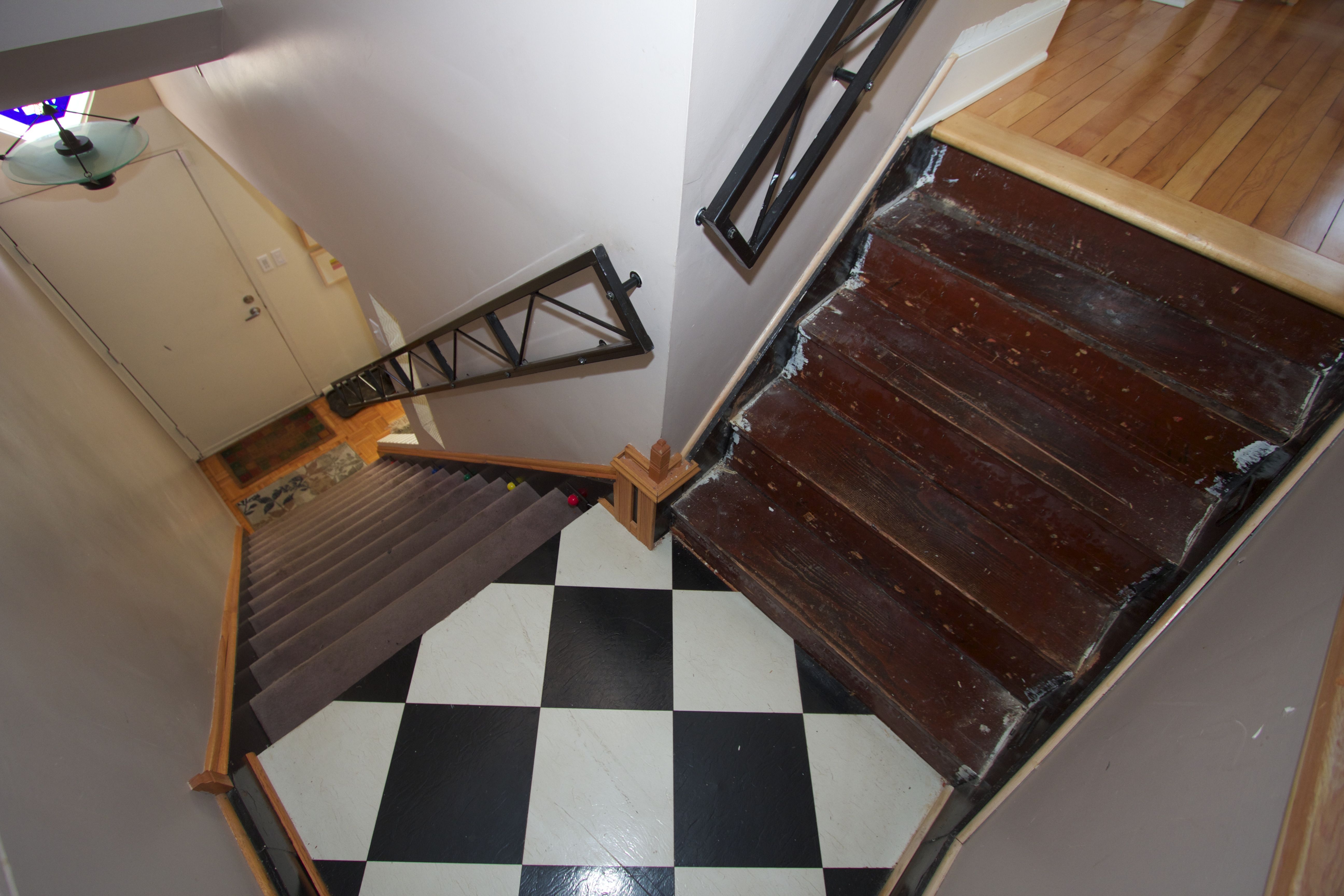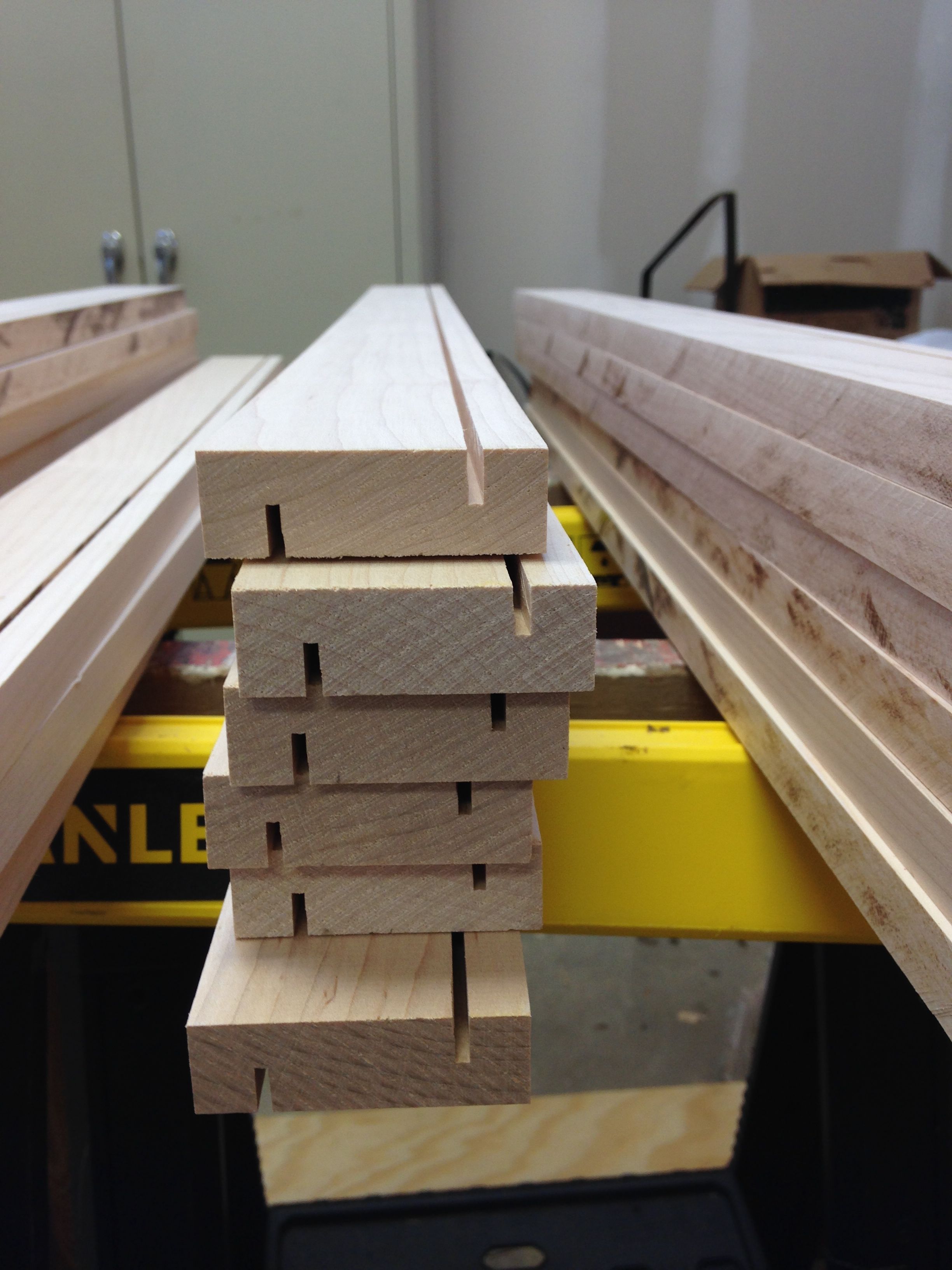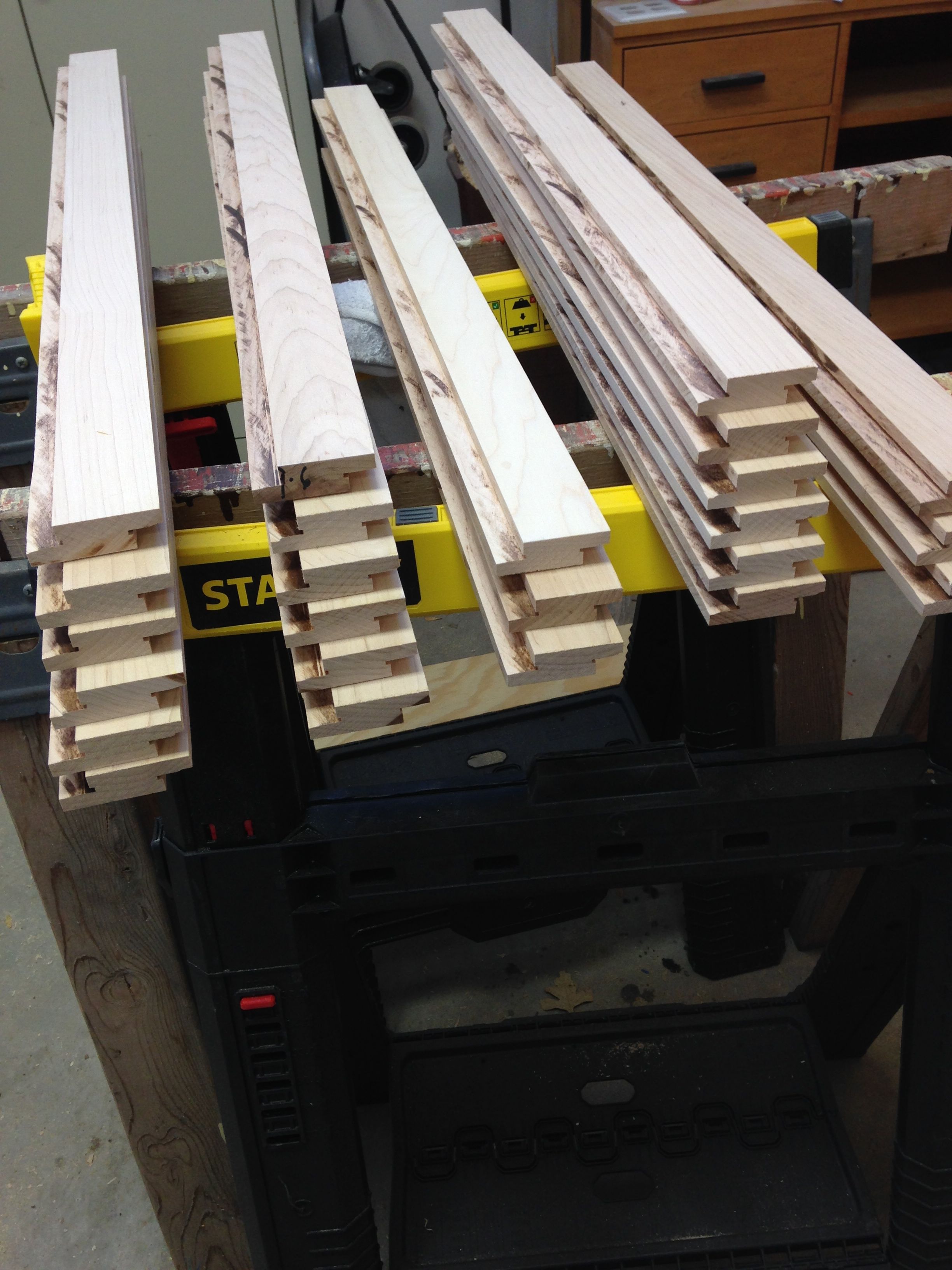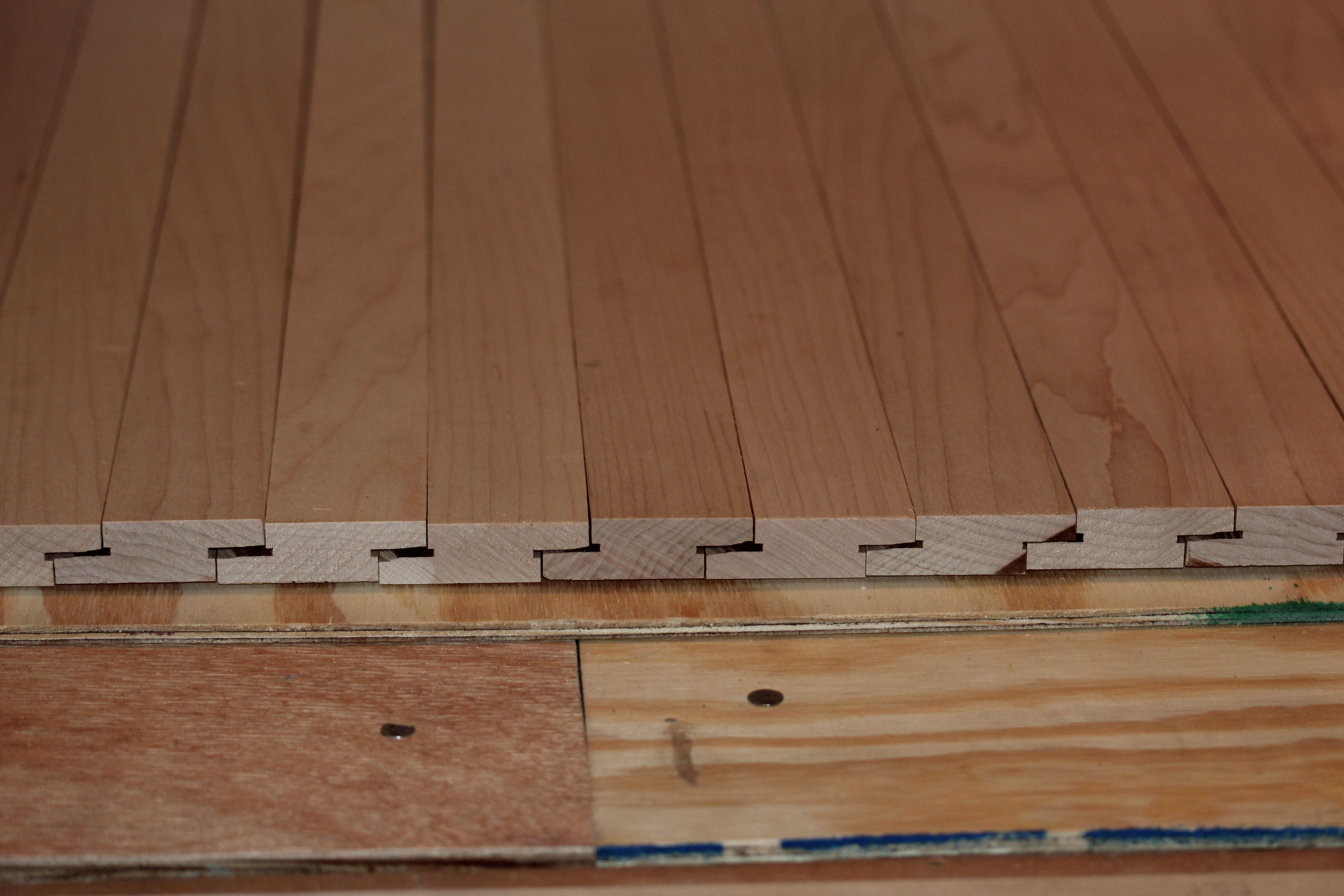With the treads and risers shaped and mostly installed, I turned to the landing, that platform at the top of the twelve main steps, which with a 90 degree turn, presented the remaining five steps to the second floor living quarters.
The landing was the last vestige of the black and white checkerboard theme that dominated this floor. I had a mild reluctance to remove it. Somehow it seemed to fit with the other quirky attributes of This Odd House, especially the disco ball, and the “runway lights”, but the time had come to modernize them. I had a vision that would do so, and still retain some of the character.
Under the black and white vinyl tiles was a subfloor panel, and under that was the original flooring, maple that had been stained, tortured, painted, and abandoned. I considered renovating it by sanding it down and refinishing. It might match the upstairs wood flooring. But then after such heroic resuscitation, it might look something entirely different.
I looked at the new treads and risers that I had installed, and realizing that I had an accidental excess supply of the very same wood sitting in my garage, decided that I could replace the wood on this landing with the same hard maple that the rest of the stairs were built from.
It sounded right to me. The stairway would become a single integrated experience. There was one problem. Wood flooring is usually installed as 2-1/2” tongue and groove, and to keep the architectural style, this needed to be honored. My wood stock was 7-1/2” wide. This would just not look right if it were installed as is.
So I resolved to cut my boards into strips. I did not have the capability to make real tongue and groove edges, but perhaps I could make overlapping joints and count on the stiffness of the wood to keep its form.
Each 7-1/2” board could be cut into three (almost) 2-1/2” strips. Each of those could be cut so that it would overlap with its neighbor by ½”. It would take 14 precision cuts per board. I needed to chop up eight such boards, so I would be putting the table saw to extensive use for this hundred-plus cuts.
Once again, I went into “production mode”. Cutting the strips, then cutting the overlap notches was a process that consumed an entire afternoon. I regarded it as utilizing the shop as a sawmill.
When I was done, I laid out the wood strips on the landing, overlapping them by the exact amount, and was pleased that this would actually work!





Thor, some of us have table saw shaper blades that can cut tongue and groove edge cuts instead of the rabbit cuts you employed. The advantage of your rabbits is that they will allow some expansion/shrinkage as the humidity in your home varies. Good job, do you still have all your fingers/fingertips?
Eric